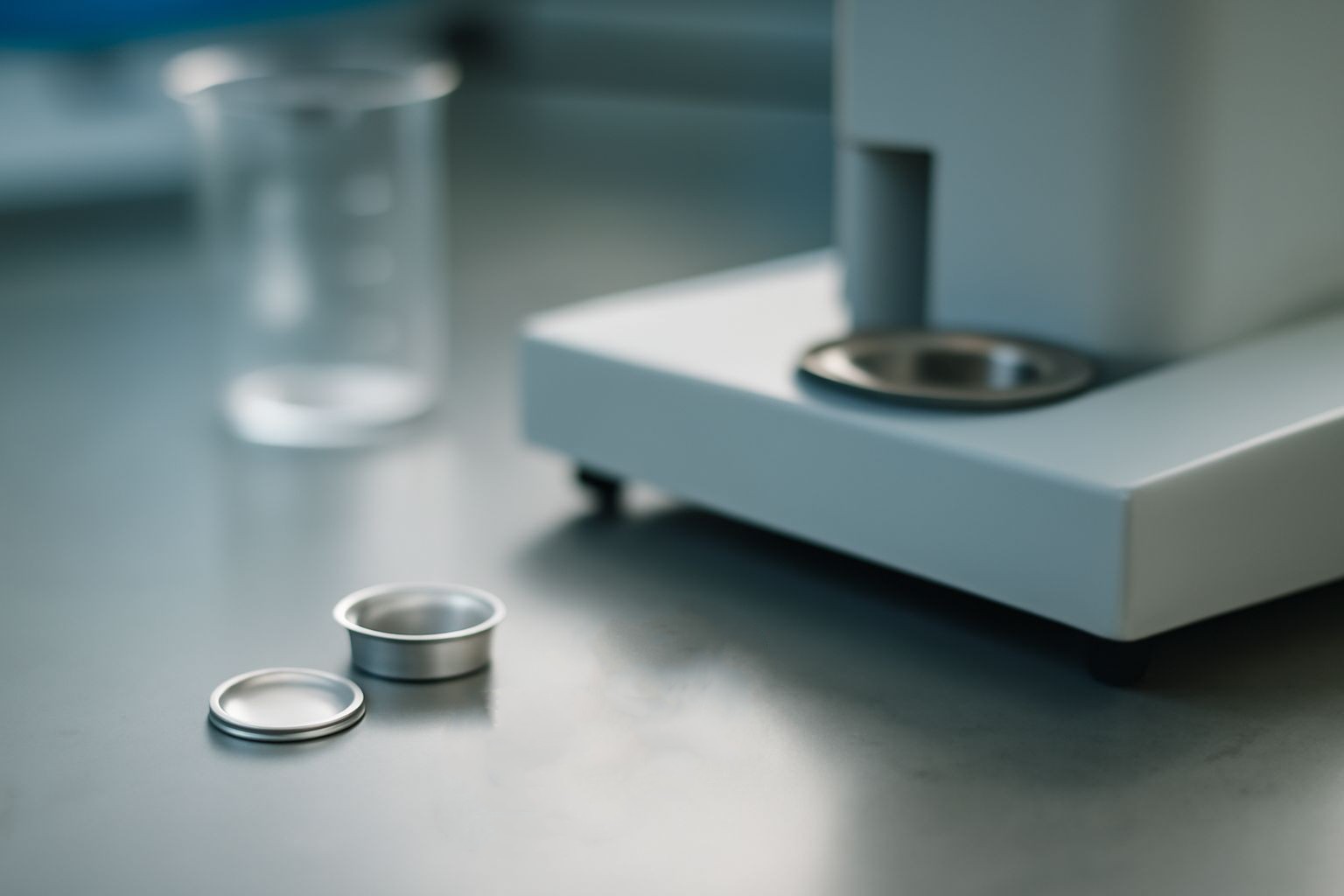Your cart is empty.
shop now
Your cart is empty.
shop now
Many labs waste time and money by using the wrong DSC sample pans for their specific testing needs. This leads to failed tests and sample loss.
Choose disposable DSC sample pans based on real scenario requirements. Assess the sample’s nature, the highest temperature, and your testing frequency. Pick pans that fit these details, and you will avoid errors and get reliable results.

Laboratories handle many types of thermal analysis. Each sample comes with its own challenge. If you match only the basic needs, you may not get precise results. I often advise clients to look closer at their testing setups before making a choice. This small effort always improves efficiency and keeps results consistent. Now, I will show how to select disposable DSC pans for your specific use case.
Some labs struggle when DSC pans deform or fail during high-heat cycles. This damages the pan and sometimes the sample itself.
Pick pans rated for your maximum temperature. High-temperature disposable DSC pans use materials like pure aluminum, platinum, or specialized alloys for lasting thermal stability and safety.
| Material Type | Max Temperature | Typical Use | Comments |
|---|---|---|---|
| Aluminum | 600°C | Standard polymer or organic samples | Budget-friendly, but not suitable for very high temp |
| Platinum | >1500°C | Ceramics, metals, inorganics | Excellent stability and reuse, but high cost |
| Alloy (e.g., nickel-based) | 700–1100°C | Oxidizing atmospheres, TGA compatibility | Extra strength for demanding phases |
My clients often pick aluminum for routine work, but for harsh runs, a platinum or special-alloy pan is safer. Manufacturers like NETZSCH and PerkinElmer also highlight these differences. Picking the correct max temperature rating always prevents warped pans and protects valuable samples.
I meet labs where samples evaporate, leak, or explode during DSC testing. Standard pans cannot always keep volatile materials safe.
For volatile or sensitive samples, use hermetically sealed disposable pans. These pans prevent leaks, loss of mass, and protect the DSC cell from damage or contamination.
| Pan Feature | Suitable Sample Type | Advantage | Note |
|---|---|---|---|
| Hermetic Seal | Liquids, volatile organics | No evaporation, precise mass control | Needs special press for proper sealing |
| Pressure-resistant Pan | Samples releasing gas | Withstands buildup, avoids bursting | Check pressure rating with supplier |
| Vent Hole Cap | Some volatile solids | Releases gas at set pressure | Limits sample size |
I use hermetic disposable pans when working with water-rich samples or solvents. This keeps results accurate and protects expensive DSC cells. For rapid screening, a vented pan can work if pressure rise is moderate. Always confirm the pan’s sealing method with your equipment manual.
Labs running routine DSC tests often waste time with contaminated pans, inconsistent data, or slow pan replacement.
Select standardized disposable pans with high batch consistency for routine work. This ensures easy replacement, reliable data, and less downtime between experiments.
| Pan Property | Benefit in Routine Use | Actionable Tip |
|---|---|---|
| Batch Consistency | Uniform results | Buy from trusted brands with strict QC |
| Pre-cleaned Surface | Less background noise, fewer errors | Avoid manual cleaning, use “ready to go” pans |
| Volume Options | Match to common sample sizes | Limit overfilling or wasted space |
I advise new users to stick with one disposable pan type for daily work. Changing models too often confuses workflows. A well-chosen standard pan also keeps costs low since bulk packs are cheaper. Reference documentation like Mettler-Toledo’s Application Notes details these best practices.
Advanced labs need flexible solutions for custom or rare testing. One pan design cannot fit all evolving research requirements.
Opt for disposable DSC pans that accept sample customization. Select models with available modifications like vent holes, unique sizes, or compatible lids to match your changing R&D demands.
| Adaptation Option | Research Application | Benefit | Source/Info |
|---|---|---|---|
| Custom Size/Shape | Nonstandard samples, low mass | Improves sensitivity for thermal analysis | REDTHERMO customization |
| Vented/Sealed Lid Choice | Gas-releasing samples, new compound trials | Control over open/closed systems | Factory or supplier option |
| Material Variants | Special temperature or chemical exposure | Protects instrument, allows wider tests | DSC Basics |
When I work with new polymers or reactive compounds, regular pans can limit what I test. Switching to custom or modular disposable designs opens up more research questions. R&D teams benefit from talking with suppliers able to match these changing needs. Top producers offer technical drawings and even sample runs to verify perfect fit before mass buying.
Choosing the right disposable DSC sample pan for each lab scenario protects your results and improves your workflow. It ensures safer, more accurate thermal analysis every time.
Contact technical support: info@redthermo.com